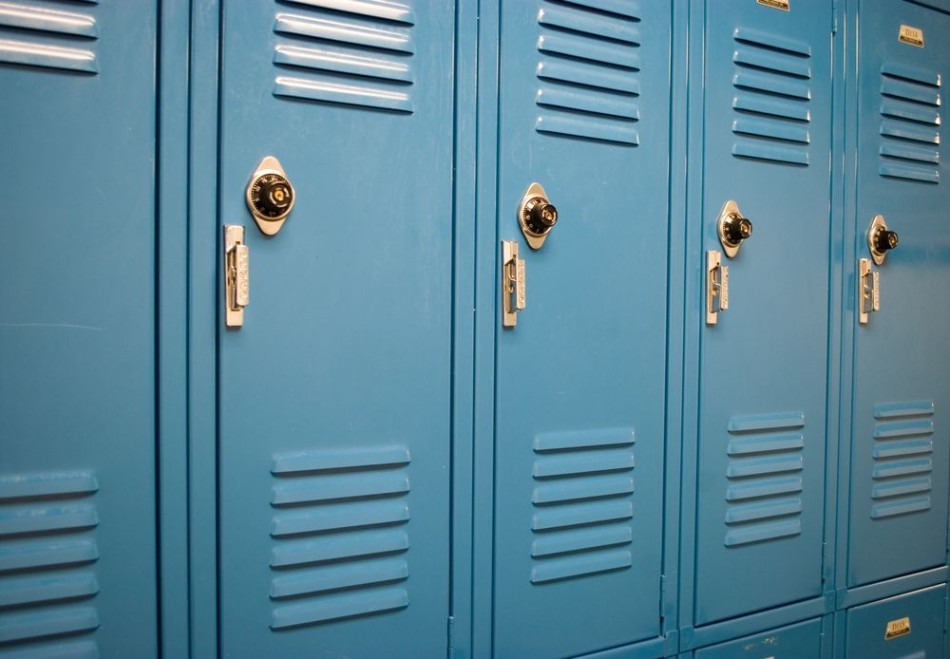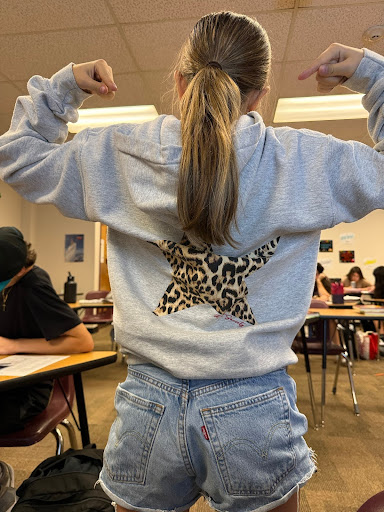Schools in America vs. Schools in the Rest of the World
September 28, 2018
A new school year comes with a new set of exchange students, and there are plenty at Mountain Ridge. I talked with some of our exchange students about the schools in their home countries. Here are the answers from four junior girls: one from Thailand, one from Germany and two from Norway.
1. How does the school system work in your country? Grades? School day times?
Nat, Thailand:
It depends on the school, because we have many different types of schools in Thailand, like public, private or international schools. But the way the regular Thai school works is that first there are three years of optional kindergarten, then you move on to primary school, which is required and goes from grade 1 through 6. Secondary school, or high school, is also required and goes from 7th grade through 12th grade. From grade 10, you can choose a program-line which determines which classes you take. After that, you can move onto university or college if you want. The school hours are usually from 7:30 or 8 am until 3:30 or 4 pm.
Maya, Germany:
Our grading system is from 1 to 6, where 1 is the best. A normal school day lasts from 7:45 am to 1 pm. Some days we have afternoon school from 2 pm to 3:30 pm in addition to the normal school day. We don’t have the same schedule every day. We have a lot more different classes to choose from, and until grade 11, we only get to choose electives like science, Latin, French, and Spanish.
Kristi, Norway
In Norway, kids usually get put in daycare when they’re about a year old until we start school at around five or six years of age. It’s a little bit different in Norway, because the classes are divided so that all the people born in 2001 are in one grade, then all born in 2000 is in the one above and so on. We have 10 years of required primary school, which is divided into four years of elementary school, three years of middle school, and then three years of “junior-high school”. Then you move on to high school. How long you are in high school depends on which program-line you choose. You can choose general studies, sports, music, dance, drama, etc… This prepares you for college/university and lasts for three years. “Vocational” subjects prepare you for a specific profession, and lasts for two years as a student and two years as an intern. Our grading system is from 1-6 where 6 is the best.
My school hours changed a lot, they were usually from 8:10 am to 3:50 pm, but I had a lot of free periods, so some days I would start 9:40 am, end 1 pm or have a free period from 1-2:20 pm.
Ine, Norway
The school hours differs from school to school, but mine were from 8:30 am to 2 pm.
2. How is the student-teacher relationship?
Nat, Thailand:
The teachers are not really close to you unless you are his/her favorite or have an outstanding personality that makes him/her recognize you.
Maya, Germany:
Teachers and students aren’t as close in Germany as they are here, but it’s not that different.
Kristi, Norway
I had a great relationship with my teachers in Junior High, and I have some of them on Facebook, but that’s maybe because I’m from a really small town where everyone knows everyone. When I moved to go to high school, I started at a school that was a much bigger school than my previous ones, and I did not get a good connection with any of my teachers, because they didn’t give much of themselves.
Ine, Norway
Our teachers weren’t that involved with us and our learning, unless we contacted them and made them see us and help us. At my school, they were supposed to have teacher-student conversations every other week, but we only talked twice a year.
3. Did you have recess/breaks during the day?
Nat, Thailand:
In my Thai school, we had two breaks during the day- the first is lunch which is after 4th hour, and the second is a 10 minute break after 6th hour.
Maya, Germany:
We had two breaks- one that’s 15 minutes and the other one is 20 minutes. If we had afternoon school, we also had a one hour lunch break.
Kristi, Norway
We had a 30-minute lunch break and 10-minute break between every class. We usually had free-periods during the day, but that depended on our schedule. In my school, the whole school had a free-period in the middle of the day on Wednesday called “school-environment period”. During our breaks, we could go wherever we want, on or off campus, as long as we were back when our next class started.
4. What is the biggest difference you’ve noticed between your home school vs MRHS?
Nat, Thailand:
In my home school we used books and notebooks/computers while MRHS uses iPads. We also wore school uniforms every day, and the school provided us lunch and also chose our classes for us. At home, the teachers walked to our assigned classroom, but here, the teachers have one classroom, and the students switch classes.
Maya, Germany:
It’s just a completely different system. For example, we had all our classes with the same people, and we stayed in the same classroom all day, while the teachers changed rooms.
Kristi, Norway
Everything, really. It’s hard to come up with something that’s not different, from our schedule, to the size of the school, the teachers, the lunch, the transportation, mostly small things etc.…
Ine, Norway
There are a lot of students at Ridge, but there were only 280 students at my school in Norway.
5. What do you like/dislike about MRHS?
Nat, Thailand:
The things I like are that there are nice facilities here, lots of different class options, diversity, and trained teachers. I don’t like that the passing period between classes is so short, that my homework is on the iPad, that there’s no lockers, and that the Wi-Fi is not available for the students.
Maya, Germany:
I pretty much like everything.
Kristi, Norway
I think I like everything. I like that you can join sports and clubs through school, and meet a lot of new people through that. There’s a lot more assignments and homework here, but the tests are easier. In Norway, I didn’t really have homework, but the tests were a lot harder. I like the school here better.
Ine, Norway
I don’t really like the iPads- my school in Norway provided us with MacBooks, and I prefer doing my work on a laptop, rather than the iPad. A thing I like here is that you can do sports right after school with the school team. I also like the fact that all of the teachers have their own classroom.
6.What do you like/dislike about your home school?
Nat, Thailand:
I like that we had the same classmates in every class, that people were friendly, and that the transportation to the school were convenient. I dislike that there was too much unnecessary work, the rules were very strict, there were few technology facilities, and there was more memorizing than understanding.
Maya, Germany:
I dislike that it was really hard.
Kristi, Norway
One thing I miss about my school in Norway is that I usually started school at 9:40 am at least one day in the week. The thing I don’t like is that the tests were a lot harder, requiring us to discuss and reflect and write long answers. Here, it is mostly multiple choice questions. It was also sometimes inconvenient with some of our free-periods, because we usually just sat at school and waited until the next class started, but they could also be really fun if we had one with our friends.
Ine, Norway
I don’t like that we had to take and pay for the bus, to get to where we have P.E. I generally like the school here better.
7. How was lunch in your home country?
Nat, Thailand:
Our lunch was mostly a rice menu or noodle, and we cooked fresh food. The school had only one option for lunch, but they provided it for us so we did not have to pay anything.
Maya, Germany:
We ate at home, or on afternoon school days, we went into the city and ate there or bought lunch in the grocery store.
Kristi, Norway
I usually brought food from home, and I think that’s what most people did as well. You could buy stuff from the cafeteria, but there weren’t as many options as there are here. We had a salad bar, but other than that, you could mostly just buy yogurts, sandwiches, or drinks. My school had a McDonald’s right across the road, so some people went over there to buy their lunch, or they went to one of the grocery stores nearby.
Ine, Norway
We brought sandwiches and sat with our friends in the cafeteria or somewhere else in the school.
8. How were the school buildings? Did you have a big campus?
Nat, Thailand:
We had seven tall buildings on campus, but the campus was really small because it was located in the center of Thailand’s capital, Bangkok.
Maya, Germany:
We did not have a big campus; our building was a lot smaller!
Kristi, Norway
We only had one building that was maybe the size of the C and CC building combined, maybe smaller. They’re actually making it bigger this year, so I’m glad I’m here so I don’t have to have classes disturbed by construction noises. Its right next to a mall and the European Route (the freeway, a little outside the city center).
Ine, Norway
My school was in the beginning of a shopping street and had only one very small main building.
9. What after-school opportunities do you have at your home school? Clubs? Sports?
Nat, Thailand:
Since my school was one of the top academic high schools in Thailand, we had after-school opportunities for us, but not a lot. We could take extra classes like tutoring classes for Olympic competitions for biology, math, chemistry, physics, etc… but you needed a portfolio and had to pass an exam to enroll. There were also tutoring classes for people who needed extra help. We did have some clubs, but we were not that serious about it, and since people were focusing more on academics, our level of sports wasn’t really that high.
Maya, Germany:
We did have clubs and sports, but almost no one participated. Most people did their hobbies in separate sport clubs.
Kristi, Norway
At my school, there was only one club called KRIK, which is a Christian sports club, but there weren’t that many members. There were no after-school opportunities other than that. You could play sports in school, but only if you to a Sports Program Line when you start high school, but that isn’t a team, it’s only like PE classes with you particular sport in addition to you out of school club.
Ine, Norway
There are no after-school opportunities.
10. Do students work in your country while attending school?
Nat, Thailand:
In my Thai high school, the students didn’t have jobs, but some students in other schools chose to have them, but that was mostly students with financial difficulties.
Maya, Germany:
Yes, some people had jobs. The jobs were mostly like delivering the newspaper, or little jobs like that.
Kristi, Norway
There were maybe like 50% or more of the students that had a job. People worked in clothing stores or at restaurants in fast-food.
Ine, Norway
A lot of students worked, but there were a lot that didn’t also.





